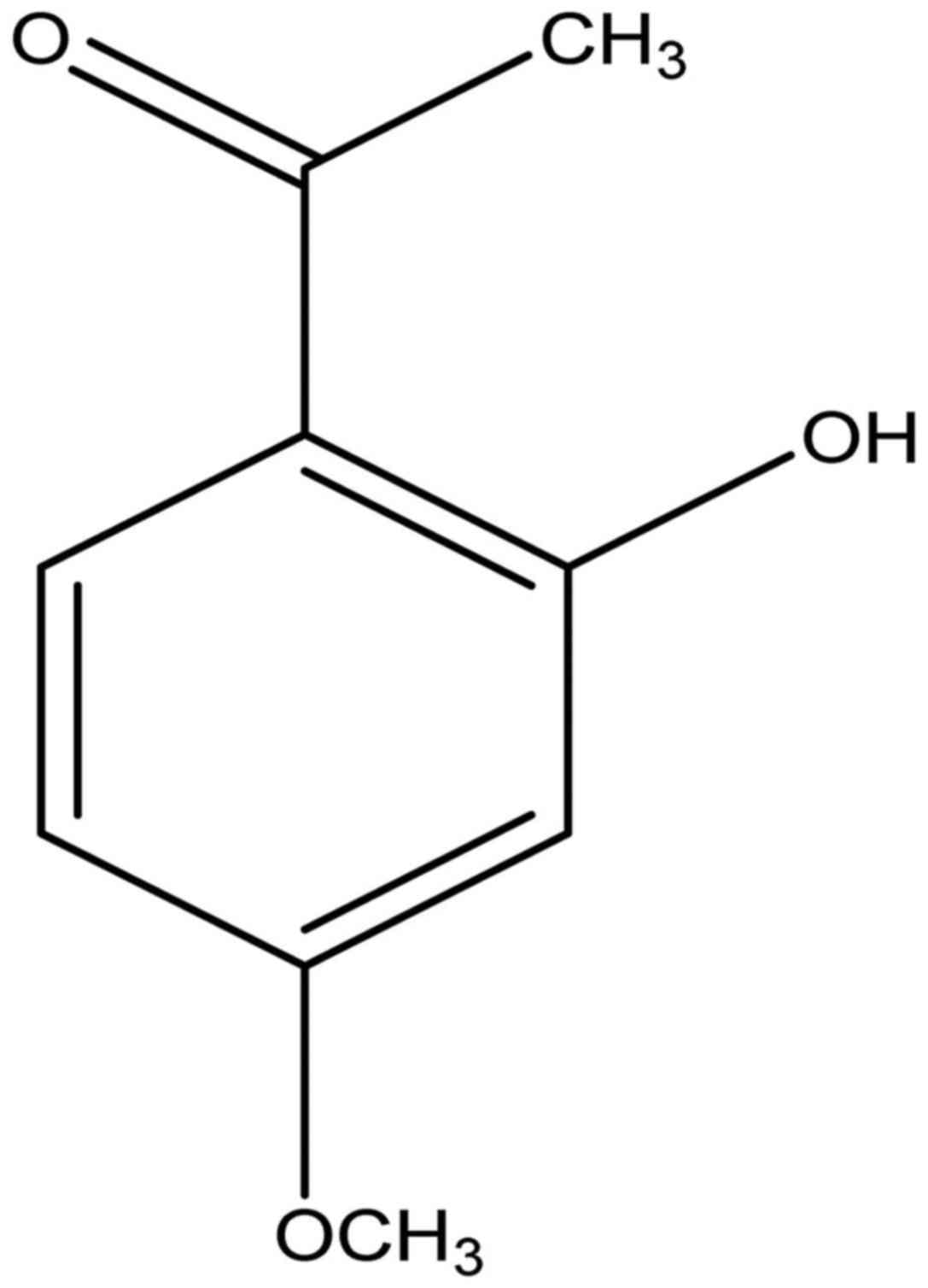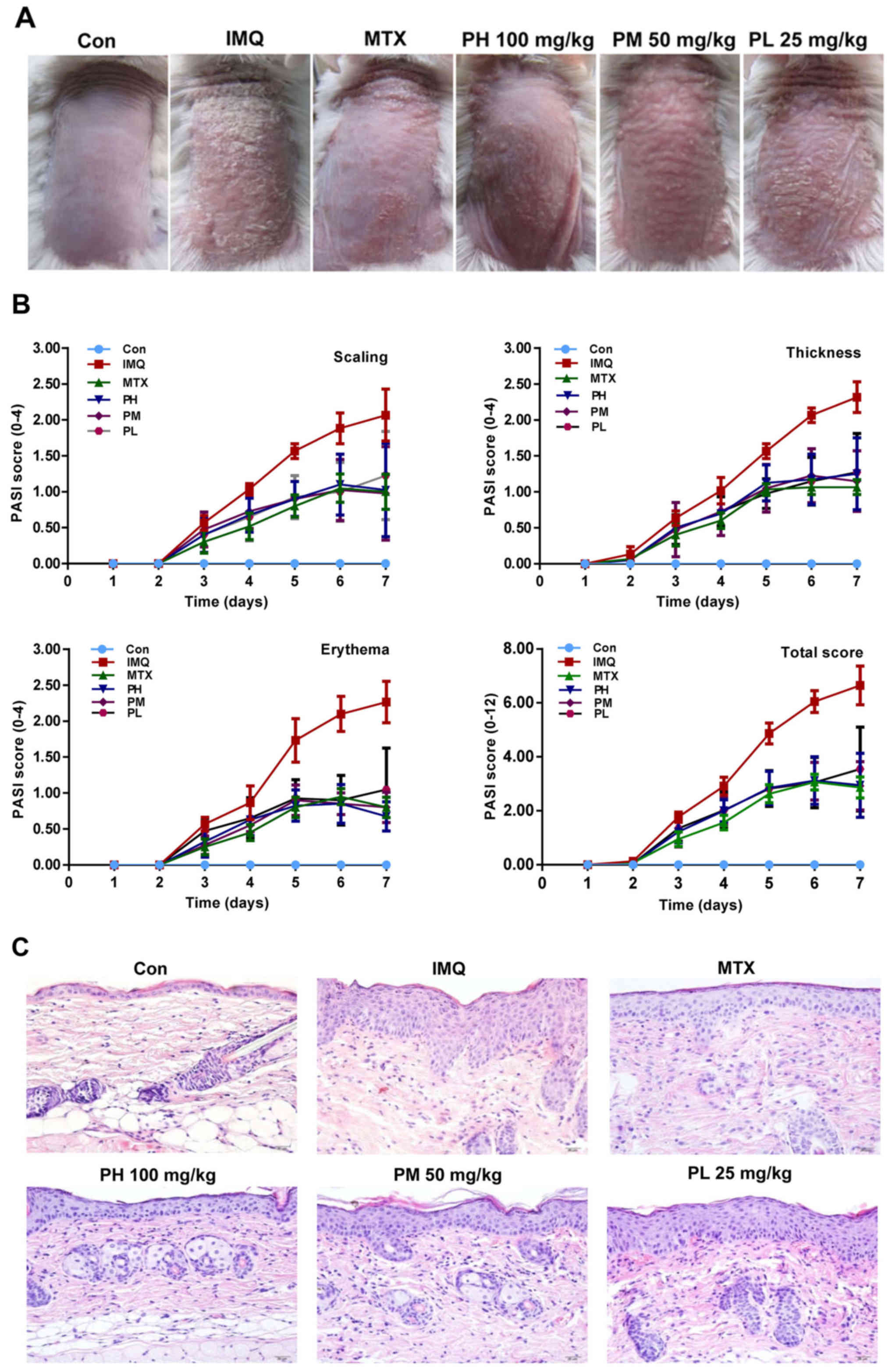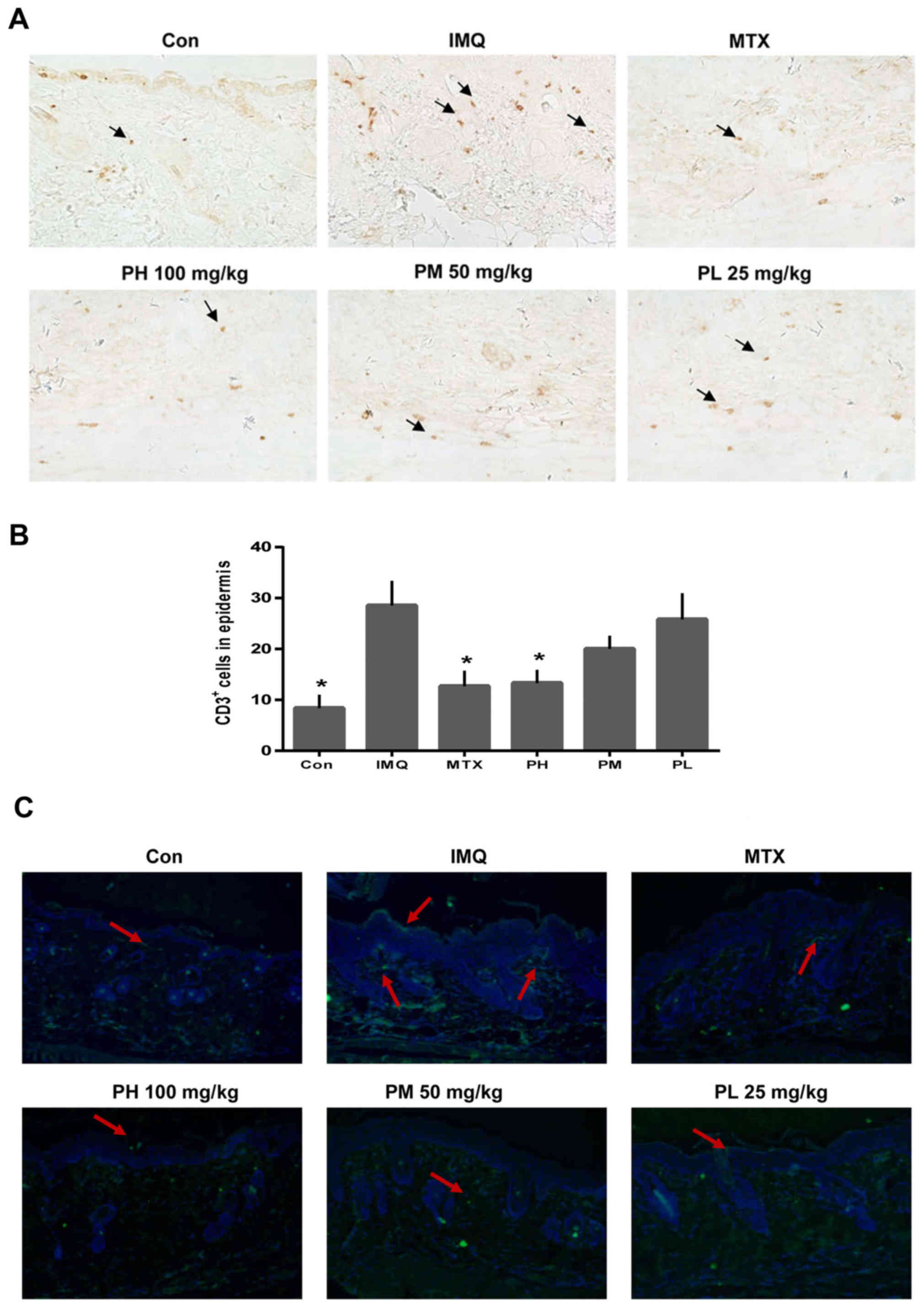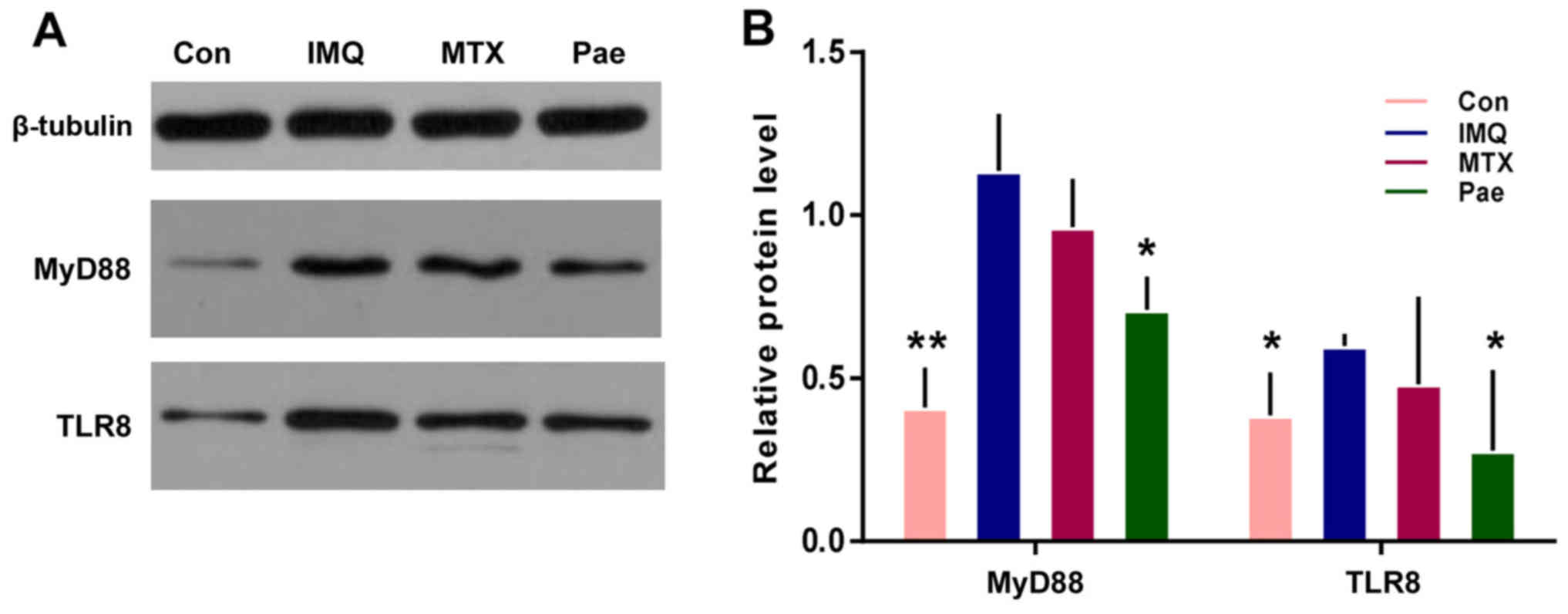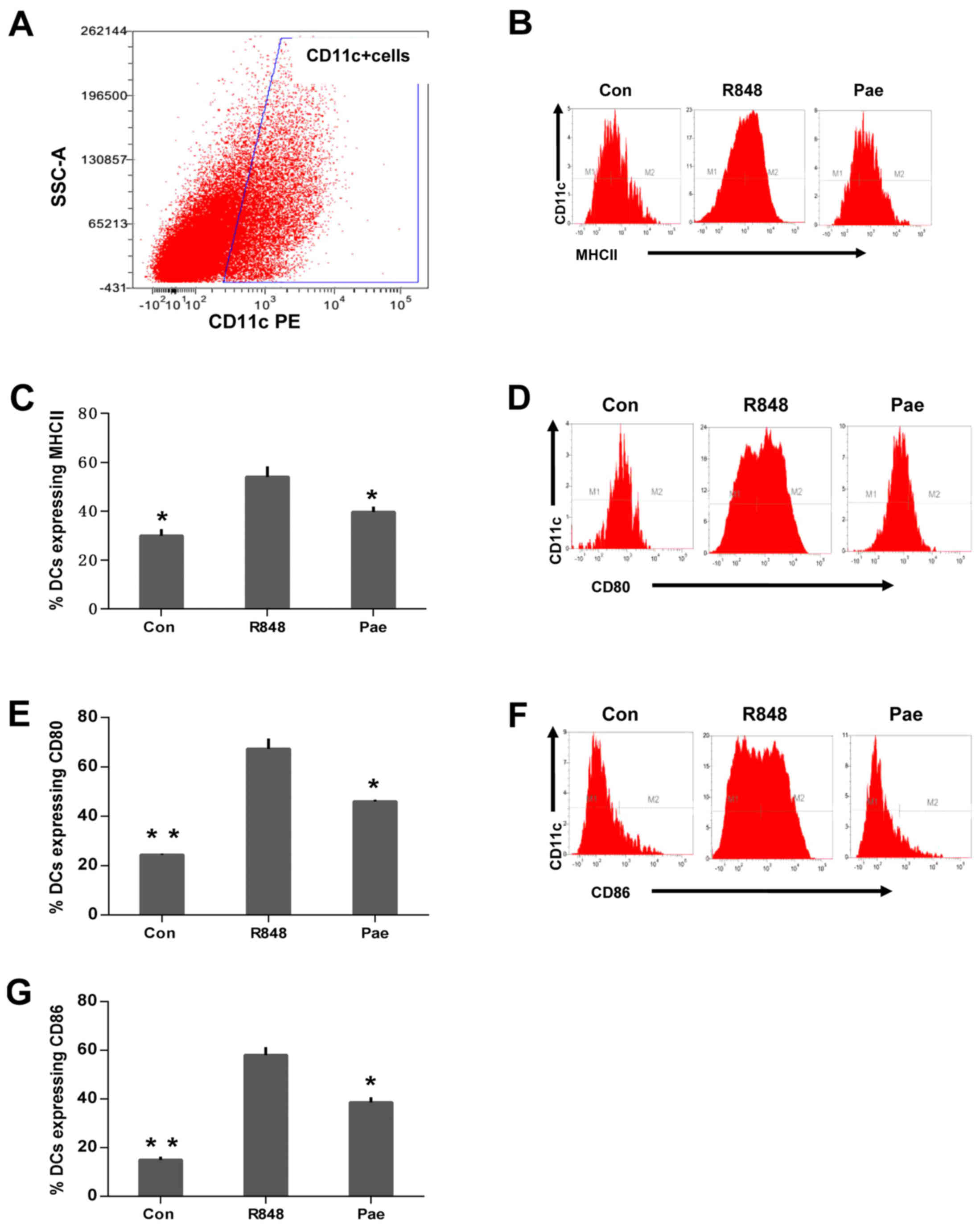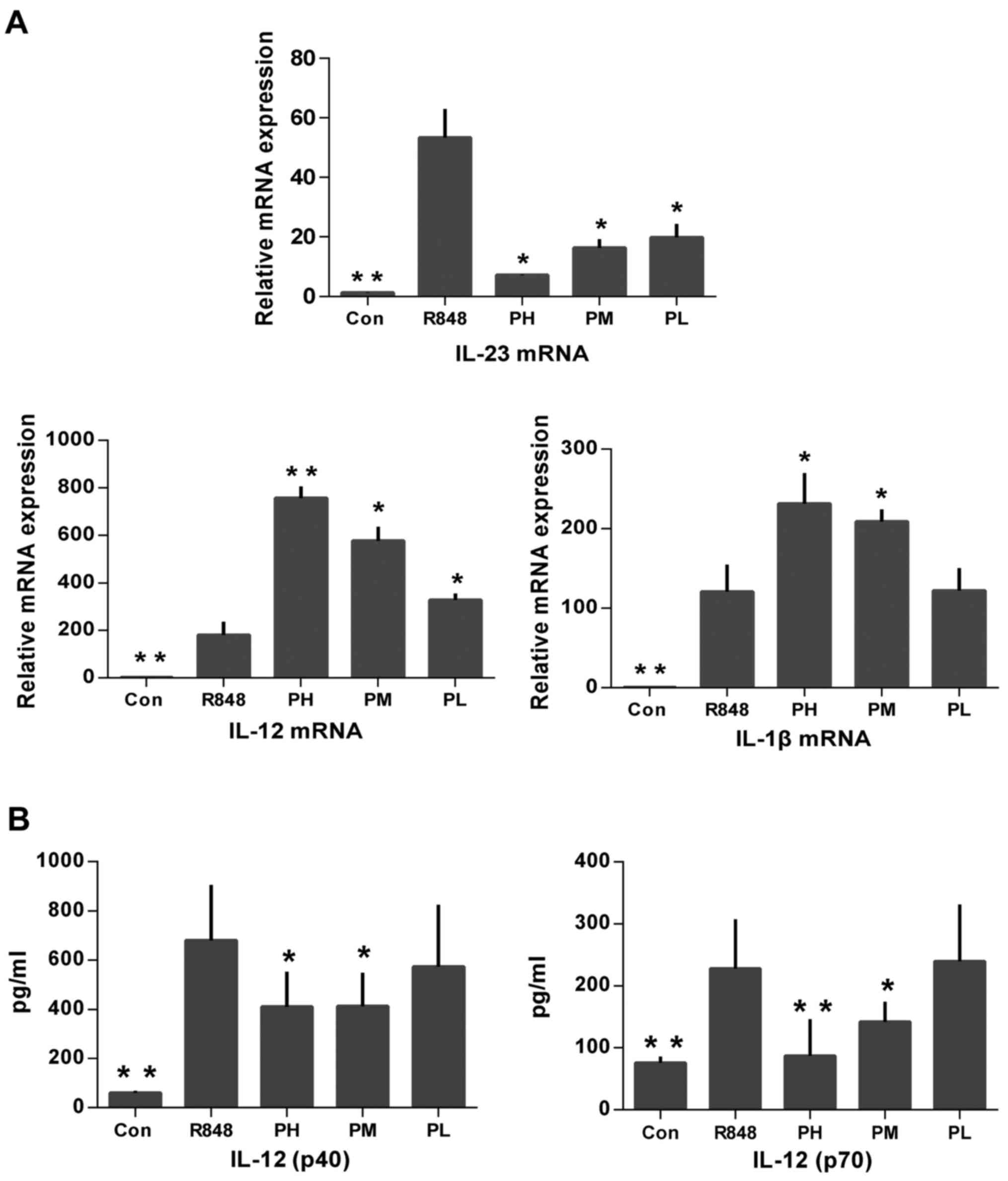|
1
|
Parisi R, Symmons DPM, Griffiths CEM and
Ashcroft DM; Identification and Management of Psoriasis and
Associated ComorbidiTy (IMPACT) project team: Global epidemiology
of psoriasis: a systematic review of incidence and prevalence. J
Invest Dermatol. 133:377–385. 2013. View Article : Google Scholar
|
|
2
|
Ben Salem C, Hmouda H and Bouraoui K:
Psoriasis. N Engl J Med. 361:17102009. View Article : Google Scholar : PubMed/NCBI
|
|
3
|
Lima Ede A and Lima Mde A: Reviewing
concepts in the immunopathogenesis of psoriasis. An Bras Dermatol.
86:1151–1158. 2011.
|
|
4
|
Zaba LC, Fuentes-Duculan J, Eungdamrong
NJ, Abello MV, Novitskaya I, Pierson KC, Gonzalez J, Krueger JG and
Lowes MA: Psoriasis is characterized by accumulation of
immunostimulatory and Th1/Th17 cell-polarizing myeloid dendritic
cells. J Invest Dermatol. 129:79–88. 2009. View Article : Google Scholar
|
|
5
|
Kim J and Krueger JG: The
immunopathogenesis of psoriasis. Dermatol Clin. 33:13–23. 2015.
View Article : Google Scholar
|
|
6
|
Mahil SK, Capon F and Barker JN: Update on
psoriasis immunopathogenesis and targeted immunotherapy. Semin
Immunopathol. 38:11–27. 2016. View Article : Google Scholar :
|
|
7
|
Nestle FO, Turka LA and Nickoloff BJ:
Characterization of dermal dendritic cells in psoriasis.
Autostimulation of T lymphocytes and induction of Th1 type
cytokines. J Clin Invest. 94:202–209. 1994. View Article : Google Scholar : PubMed/NCBI
|
|
8
|
Nestle FO, Di Meglio P, Qin JZ and
Nickoloff BJ: Skin immune sentinels in health and disease. Nat Rev
Immunol. 9:679–691. 2009.PubMed/NCBI
|
|
9
|
Krueger JG and Bowcock A: Psoriasis
pathophysiology: current concepts of pathogenesis. Ann Rheum Dis.
64(Suppl 2): 30–36. 2005. View Article : Google Scholar
|
|
10
|
Lowes MA, Suárez-Fariñas M and Krueger JG:
Immunology of psoriasis. Annu Rev Immunol. 32:227–255. 2014.
View Article : Google Scholar : PubMed/NCBI
|
|
11
|
Di Cesare A, Di Meglio P and Nestle FO:
The IL-23/Th17 axis in the immunopathogenesis of psoriasis. J
Invest Dermatol. 129:1339–1350. 2009. View Article : Google Scholar : PubMed/NCBI
|
|
12
|
Bettelli E, Oukka M and Kuchroo VK:
T(H)-17 cells in the circle of immunity and autoimmunity. Nat
Immunol. 8:345–350. 2007. View Article : Google Scholar : PubMed/NCBI
|
|
13
|
Arican O, Aral M, Sasmaz S and Ciragil P:
Serum levels of TNF-alpha, IFN-gamma, IL-6, IL-8, IL-12, IL-17, and
IL-18 in patients with active psoriasis and correlation with
disease severity. Mediators Inflamm. 2005:273–279. 2005. View Article : Google Scholar : PubMed/NCBI
|
|
14
|
Mitra A, Fallen RS and Lima HC:
Cytokine-based therapy in psoriasis. Clin Rev Allergy Immunol.
44:173–182. 2013. View Article : Google Scholar
|
|
15
|
Akira S, Uematsu S and Takeuchi O:
Pathogen recognition and innate immunity. Cell. 124:783–801. 2006.
View Article : Google Scholar : PubMed/NCBI
|
|
16
|
Dika E, Varotti C, Bardazzi F and Maibach
HI: Drug-induced psoriasis: an evidence-based overview and the
introduction of psoriatic drug eruption probability score. Cutan
Ocul Toxicol. 25:1–11. 2006. View Article : Google Scholar : PubMed/NCBI
|
|
17
|
Stary G, Bangert C, Tauber M, Strohal R,
Kopp T and Stingl G: Tumoricidal activity of TLR7/8-activated
inflammatory dendritic cells. J Exp Med. 204:1441–1451. 2007.
View Article : Google Scholar : PubMed/NCBI
|
|
18
|
O'Neill LA, Golenbock D and Bowie AG: The
history of toll-like receptors - redefining innate immunity. Nat
Rev Immunol. 13:453–460. 2013. View
Article : Google Scholar : PubMed/NCBI
|
|
19
|
Liu MH, Lin AH, Lee HF, Ko HK, Lee TS and
Kou YR: Paeonol attenuates cigarette smoke-induced lung
inflammation by inhibiting ROS-sensitive inflammatory signaling.
Mediators Inflamm. 2014:6518902014. View Article : Google Scholar : PubMed/NCBI
|
|
20
|
Chou TC: Anti-inflammatory and analgesic
effects of paeonol in carrageenan-evoked thermal hyperalgesia. Br J
Pharmacol. 139:1146–1152. 2003. View Article : Google Scholar : PubMed/NCBI
|
|
21
|
Elder JT, Bruce AT, Gudjonsson JE,
Johnston A, Stuart PE, Tejasvi T, Voorhees JJ, Abecasis GR and Nair
RP: Molecular dissection of psoriasis: integrating genetics and
biology. J Invest Dermatol. 130:1213–1226. 2010. View Article : Google Scholar
|
|
22
|
Kim ME, Kim HK, Park HY, Kim DH, Chung HY
and Lee JS: Baicalin from Scutellaria baicalensis impairs Th1
polarization through inhibition of dendritic cell maturation. J
Pharmacol Sci. 121:148–156. 2013. View Article : Google Scholar : PubMed/NCBI
|
|
23
|
Bieber K and Autenrieth SE: Insights how
monocytes and dendritic cells contribute and regulate immune
defense against microbial pathogens. Immunobiology. 220:215–226.
2015. View Article : Google Scholar
|
|
24
|
Domingues R, de Carvalho GC, Aoki V, da
Silva Duarte AJ and Sato MN: Activation of myeloid dendritic cells,
effector cells and regulatory T cells in lichen planus. J Transl
Med. 14:1712016. View Article : Google Scholar : PubMed/NCBI
|
|
25
|
Nahid MA, Benso LM, Shin JD, Mehmet H,
Hicks A and Ramadas RA: TLR4, TLR7/8 agonist-induced miR-146a
promotes macrophage tolerance to MyD88-dependent TLR agonists. J
Leukoc Biol. 100:339–349. 2016. View Article : Google Scholar : PubMed/NCBI
|
|
26
|
Shao F, Tan T, Tan Y, Sun Y, Wu X and Xu
Q: Andrographolide alleviates imiquimod-induced psoriasis in mice
via inducing autophagic proteolysis of MyD88. Biochem Pharmacol.
115:94–103. 2016. View Article : Google Scholar : PubMed/NCBI
|
|
27
|
Yu D, Shi M, Bao J, Yu X, Li Y and Liu W:
Genipin ameliorates hypertension-induced renal damage via the
angiotensin II-TLR/MyD88/MAPK pathway. Fitoterapia. 112:244–253.
2016. View Article : Google Scholar : PubMed/NCBI
|
|
28
|
Singh M, Khong H, Dai Z, Huang XF, Wargo
JA, Cooper ZA, Vasilakos JP, Hwu P and Overwijk WW: Effective
innate and adaptive antimelanoma immunity through localized TLR7/8
activation. J Immunol. 193:4722–4731. 2014. View Article : Google Scholar : PubMed/NCBI
|
|
29
|
Singh TP, Schön MP, Wallbrecht K,
Michaelis K, Rinner B, Mayer G, Schmidbauer U, Strohmaier H, Wang
XJ and Wolf P: 8-Methoxypsoralen plus ultraviolet A therapy acts
via inhibition of the IL-23/Th17 axis and induction of
Foxp3+ regulatory T cells involving CTLA4 signaling in a
psoriasis-like skin disorder. J Immunol. 184:7257–7267. 2010.
View Article : Google Scholar : PubMed/NCBI
|
|
30
|
Zaba LC, Fuentes-Duculan J, Steinman RM,
Krueger JG and Lowes MA: Normal human dermis contains distinct
populations of CD11c+BDCA-1+ dendritic cells
and CD163+FXIIIA+ macrophages. J Clin Invest.
117:2517–2525. 2007. View
Article : Google Scholar : PubMed/NCBI
|
|
31
|
Kollipara R, Downing C, Gordon R and
Tyring S: Interleukin-23 in the pathogenesis and treatment of
psoriasis. Skin Therapy Lett. 20:1–4. 2015.PubMed/NCBI
|
|
32
|
Nam KN, Woo BC, Moon SK, Park SU, Park JY,
Hwang JW, Bae HS, Ko CN and Lee EH: Paeonol attenuates
inflammation-mediated neurotoxicity and microglial activation.
Neural Regen Res. 8:1637–1643. 2013.PubMed/NCBI
|
|
33
|
Hsieh CL, Cheng CY, Tsai TH, Lin IH, Liu
CH, Chiang SY, Lin JG, Lao CJ and Tang NY: Paeonol reduced cerebral
infarction involving the superoxide anion and microglia activation
in ischemia-reperfusion injured rats. J Ethnopharmacol.
106:208–215. 2006. View Article : Google Scholar : PubMed/NCBI
|
|
34
|
Tao W, Wang H, Su Q, Chen Y, Xue W, Xia B,
Duan J and Chen G: Paeonol attenuates lipopolysaccharide-induced
depressive-like behavior in mice. Psychiatry Res. 238:116–121.
2016. View Article : Google Scholar : PubMed/NCBI
|
|
35
|
Meng L, Xu W, Guo L, Ning W and Zeng X:
Paeonol Inhibits the proliferation, invasion, and inflammatory
reaction induced by TNF-α in vascular smooth muscle cells. Cell
Biochem Biophys. 73:495–503. 2015. View Article : Google Scholar
|
|
36
|
Lin C, Lin HY, Chen JH, Tseng WP, Ko PY,
Liu YS, Yeh WL and Lu DY: Effects of paeonol on
anti-neuroinflammatory responses in microglial cells. Int J Mol
Sci. 16:8844–8860. 2015. View Article : Google Scholar : PubMed/NCBI
|
|
37
|
Kim HW, Cho SI, Bae S, Kim H, Kim Y, Hwang
YI, Kang JS and Lee WJ: Vitamin C up-regulates expression of CD80,
CD86 and MHC class II on dendritic cell line, DC-1 via the
activation of p38 MAPK. Immune Netw. 12:27–283. 2012. View Article : Google Scholar
|
|
38
|
Fu PK, Wu CL, Tsai TH and Hsieh CL:
Anti-inflammatory and anticoagulative effects of paeonol on
LPS-induced acute lung injury in rats. Evid Based Complement
Alternat Med. 2012:8375132012. View Article : Google Scholar : PubMed/NCBI
|
|
39
|
Jin X, Wang J, Xia ZM, Shang CH, Chao QL,
Liu YR, Fan HY, Chen DQ, Qiu F and Zhao F: Anti-inflammatory and
anti-oxidative activities of paeonol and its metabolites through
blocking MAPK/ERK/p38 signaling pathway. Inflammation. 39:434–446.
2016. View Article : Google Scholar
|



